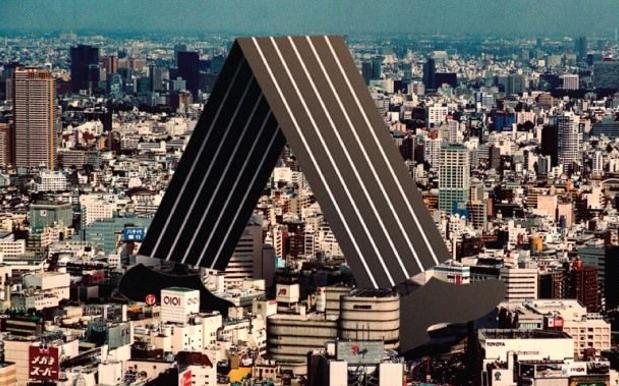
Lee Alexander McQueen CBE is the reason I love fashion. It was he who, with his house, Alexander McQueen, convinced me of the notion of fashion as art. When I received the news on February 12th 2010 that McQueen had ended his own life, I cried. The possibility of Alexander McQueen is the reason I, a proud republican (in both the Australian and Irish definitions) sat down to watch the wedding of Prince William and Catherine Middleton on Friday night. When she stepped out of that car at Westminster Abbey in a dress that was undoubtedly Alexander McQueen, again, I cried.
It was both a triumph and an incredibly poignant moment for the label so soon after McQueen’s suicide, but it’s also an uncomfortable contradiction that such a challenging label, founded by such a true punk, would end up receiving the greatest seal of institutional and conservative approval a label could ever receive.
It’s certainly not the first time a fashion rebel has received the recognition of the Palace – Vivienne Westwood, responsible for the most delightfully puerile punk designs and arrested on the Sex Pistols barge at Queen Elizabeth II’s Silver Jubilee, is now the Queen of British Fashion, OBE. The difference, of course, is that she was there for it all, in every use of her own name.
McQueen is the man who, for his second collection (A/W ’95-’96) sent models down the runway in proud tartan, ripped leather and cut-out lace, made up to look as though they’d been savaged. The collection was called Highland Rape, signifying the oppression of Scotland and its culture by English forces, specifically the Battle of Culloden, which saw his own ancestors murdered under the Duke of Cumberland. The theme was reprised in The Widows of Culloden (A/W ’06-’07). Speaking about the former in 1999, McQueen said that he had “no respect for what the English did there; they wiped whole families out … What the British did there was nothing short of genocide.”
He is the man who, in The Girl Who Lived In The Tree (A/W ’08-’09), created a now-famous dress printed with the repeated image of Queen Elizabeth II’s face, accessorised with billions of dollars worth of antique necklaces and Indian diadems, all borrowed. It is a powerful grotesque of wealth with an instantly recognisable motif – the English monarchy.
He is the man who, in 1991, while working at Anderson & Sheppard, tailors to the Prince of Wales, stitched the words ‘I AM A CUNT’ into the sleeve lining of a jacket for Prince William’s father.
And, of course, he is the man whose house went on to design the royal wedding gown just a year after he died. This isn’t, however, a ‘sell-outs!’ article. It’s a natural and deserved progression that such a brilliant label would reach these heights, it’s just that I wonder if, were he still alive, McQueen would have still designed Middleton’s dress. Of course, while he may have stitched ‘I AM A CUNT’ into Prince Charles’ personally tailored jacket, he still personally tailored it.
He would have loved the spectacle of the royal wedding, too. In Untitled (S/S ’99), McQueen set Shalom Harlow in a white dress between two serpentine car factory paint machines, attacking her with his trademark yellow and black. In Voss (S/S 2001) the show was played out in a double-mirrored cube, the models wearing the bandages of the lobotomised, while another woman in a mask, attached to breathing tubes and covered in moths, reclined naked in the centre. The Widows of Culloden show ended with Kate Moss appearing as a ghostly hologram inside a pyramid; It’s Only a Game (S/S ’05) culminated in a life size game of chess, and The Horn of Plenty (A/W 2009) employed the broken and discarded wreckage of previous shows, the models moving around it all over broken mirrors, their appearances as disfigured as the landscape. Considering McQueen’s penchant for big, weird runway shows, the royal wedding could have just been to him the biggest and weirdest of them all.
It’s deliciously subversive that the house created by Lee Alexander McQueen, of all of them, was beamed into nearly every lounge room in the world upon a future queen (consort), like a cultural Trojan horse, but it’s so sad that this will become the greatest legacy of his name, particularly as he had nothing to do with it. The concern is that with greater mainstream attention (and greater mainstream buyers), future collections will start to kowtow to a plainer demand. It was always going to happen to some degree – McQueen’s blend of mad creativity and fierce politicism just can not be replicated – but there is now the fear that this one historical moment will be the impetus for a major dilution.
It may not happen – I hope it doesn’t – but this gigantic occasion is a resounding reminder that without McQueen, the house of Alexander McQueen will need a damn good internal ombudsman. I just hope Sarah Burton can be it.
A.H. Cayley is a Sydney writer and broadcaster, specialising in music, fashion, and pop cultural commentary. She will slay you at karaoke and wants Beyonce’s ‘Single Ladies (Put A Ring On It)’ played at her funeral. Her brother says she is a wanker. She tweets here.







